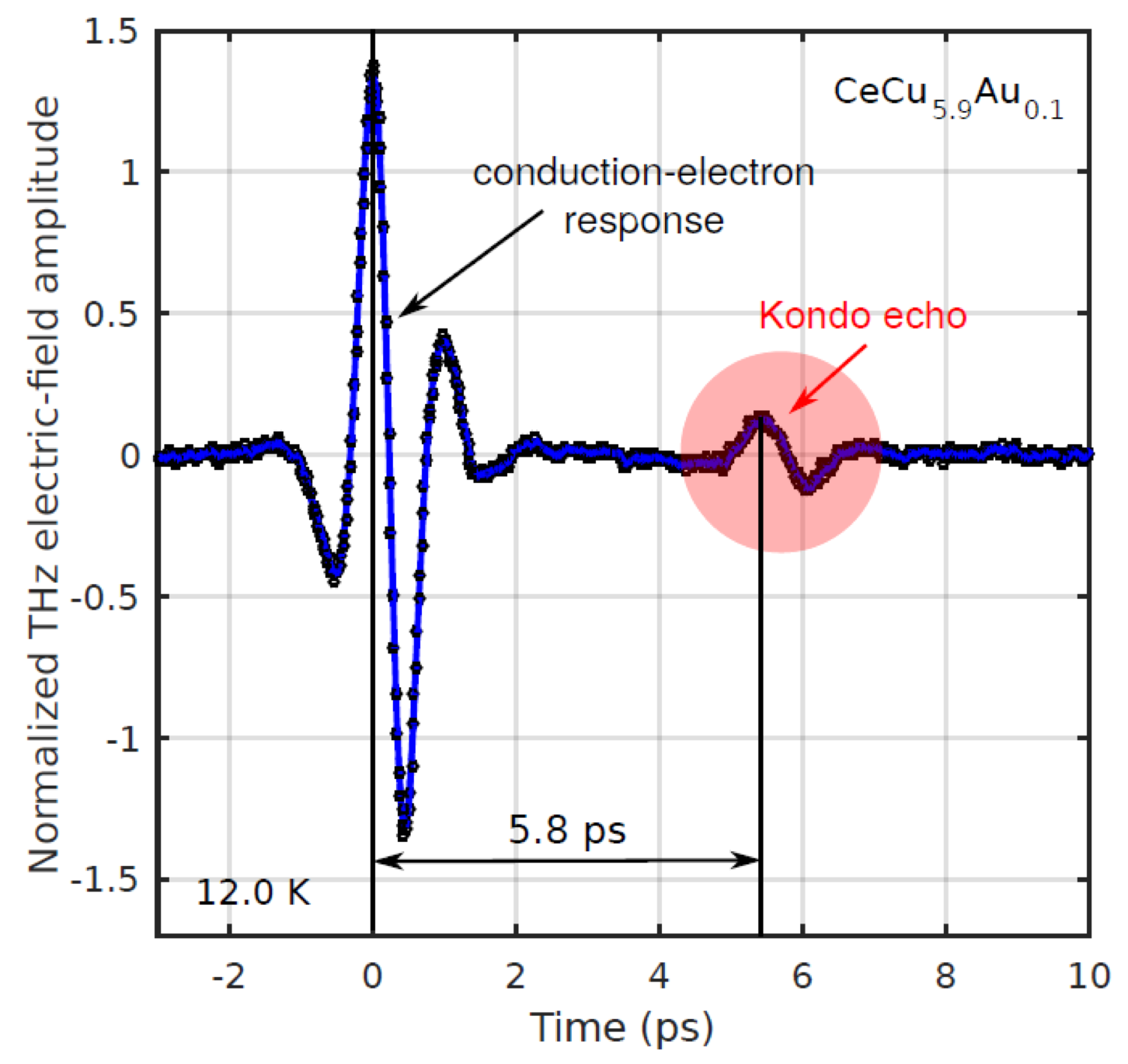Echos from the Quantum World
A collaboration on experiments headed by the Laboratory of Multifunctional Ferroic Materials (Manfred Fiebig) shows that certain materials emit optical echo pulses that reveal direct information about the quantum-mechanical nature of these systems.

When we go from the meter scale of our daily life to the length scale of (sub-) atomic particles, the world becomes really strange --- quantum mechanics takes over! Particles no longer bounce of each other like solid billiard balls. Instead, they become fuzzy and may pass through each other without noticing. In fact, it is not even possible to say where exactly each particle is and how fast it is moving. Cooling a system promotes its quantum-mechanical behavior. In a hot system, particles have a lot of energy and whizz around in a classical way. Towards zero temperature (where zero is -273°C), this energy goes away. Nevertheless, the particles do not come to a standstill, because now quantum-mechanical motion, the aforementioned built-in fuzziness, takes over.
Under the dominance of such quantum-mechanical fluctuation, a material may develop rather peculiar properties. For example, its electrical resistance may drop to zero, a state called "superconducting". In a superconductor, electrical currents flow without energy loss and waste heat, which makes it a very useful material property. Though originating at the technologically inaccessible temperature zero, such a superconducting state can live on towards higher temperatures as long as the quantum motion dominates over the classical motion. Thus, the seemingly abstract low-temperature quantum world can become very relevant to real-life device applications after all.
But how do we access those exotic quantum states experimentally? For example, one can measure magnetic, electric or other physical properties as function of temperature and conclude from deviations from the classical behavior on the processes going on in the quantum world. Or we use high-energy radiation and blow our system into pieces, attempting to derive the quantum-mechanical properties from the observed debris. Not surprisingly, the indirectness of these approaches leads to controversial interpretations of the nature of such a quantum state.
In a collaboration involving (among others) the Laboratory of Multifunctional Ferroics at the ETH Department of Materials (led by Manfred Fiebig) and the Physics Institute at the University of Bonn (Johann Kroha) a much more direct look at the quantum world was developed. They excite the quantum state with a light pulse at extremely low energy, an energy range denoted as terahertz regime. (Terahertz radiation is familiar from airports where it is used in full-body scanners.) The terahertz light pulse jiggles the quantum state very lightly, and in return to this non-destructive excitation the system emits a time-delayed terahertz pulse, a visual "echo", that carries direct information about the stability and composition of the quantum state. In a bold transfer to daily life it would mean that we use a camera flash to take the photo of a person and minutes after the photo was taken, the person suddenly emits a second flash of light that reveals information that was invisible in the primary photograph, like cancerous tissue or what the person has eaten for breakfast.
You can read the more scientific interpretation of this experiment in the current issue of Nature Physics at external pagehttps://www.nature.com/articles/s41567-018-0228-3call_made.
external pageChristoph Wetli, Shovon Pal, Johann Kroha, Kristin Kliemt, Cornelius Krellner, Oliver Stockert, Hilbert von Löhneysen, Manfred Fiebig: Time-Resolved Collapse and Revival of the Kondo State Near a Quantum Phase Transition, Nature Physics (2018), DOI:10.1038/s41567-018-0228-3.call_made
